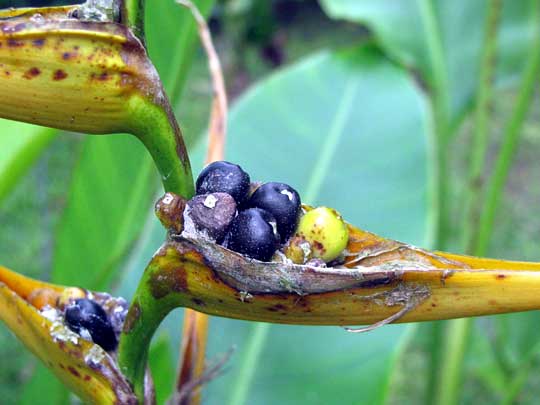Excerpts from Jim Conrad's
Naturalist Newsletter
from the July 24, 2016 Newsletter issued from Hacienda Chichen Resort beside Chichén Itzá Ruins, central Yucatán MÉXICO
FLOWERING HELICONIA
Back in December, 2009, here at the Hacienda, we looked at fruiting heliconias, Heliconia latispatha, sometimes called wild plantains {see entry below}. Nowadays they're flowering. Below, you can see some plants next to the hut, about eight feet tall (2.5m), in full bloom:
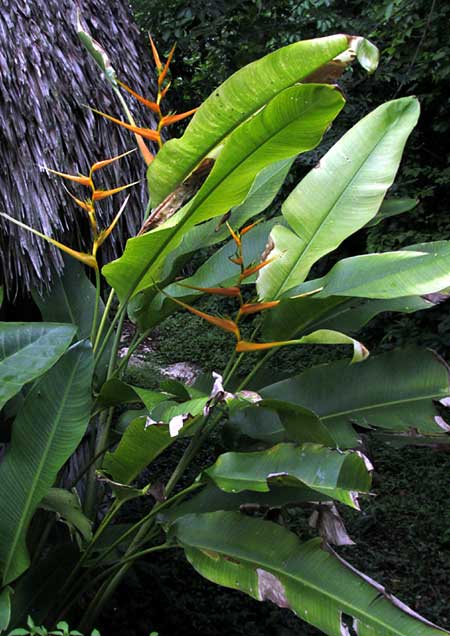
The large orange items in that picture are modified leaves, or bracts, that attract pollinators. You can see that the bract at the bottom right is half orange thing, half leaf. A close-up of our flower's orange bract is shown below:
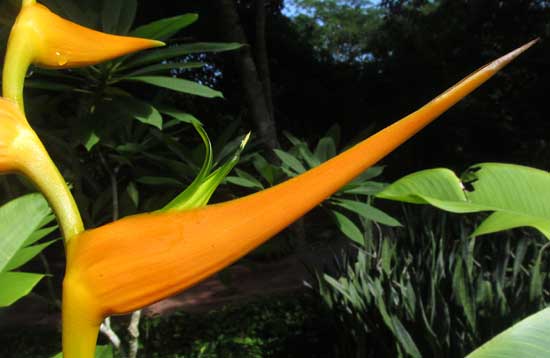
In that picture, the actual flowers are the green items peeking up from the trough of the scoop-shaped bract. Note the pale tip of one of the flowers. Those are stamens projecting from the green flower's mouth. A close-up look into the bract's trough is shown below:
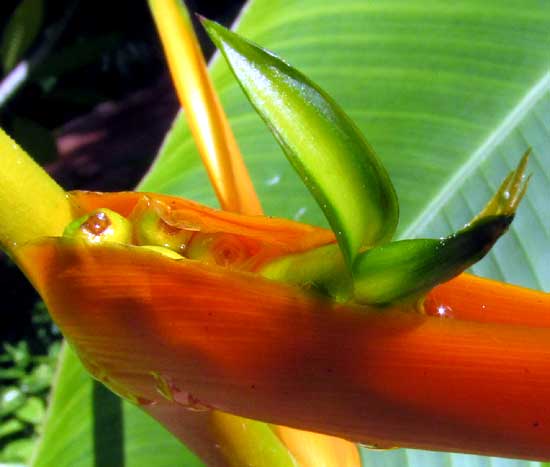
The picture shows the stamens poking from the green flower. The pea-like items in the trough to the left of the flower are ovaries from which the male parts, calyx and corolla have fallen, leaving dark scars atop the ovaries. The ovaries will mature into fruits like those we photographed in 2009.
This is all very similar to Bird-of-paradise flowers of the genus Strelitzia, but that's a much sold ornamental plant from South Africa.
from the December 20, 2009 Newsletter issued from Hacienda Chichen Resort beside Chichén Itzá Ruins, central Yucatán, MÉXICO; limestone bedrock, elevation ~39m (~128ft), ~N20.676°, ~W88.569°
HELICONIAS
Heliconias are among the most exotic-looking plants we have here. Below, you can see a portrait of one.
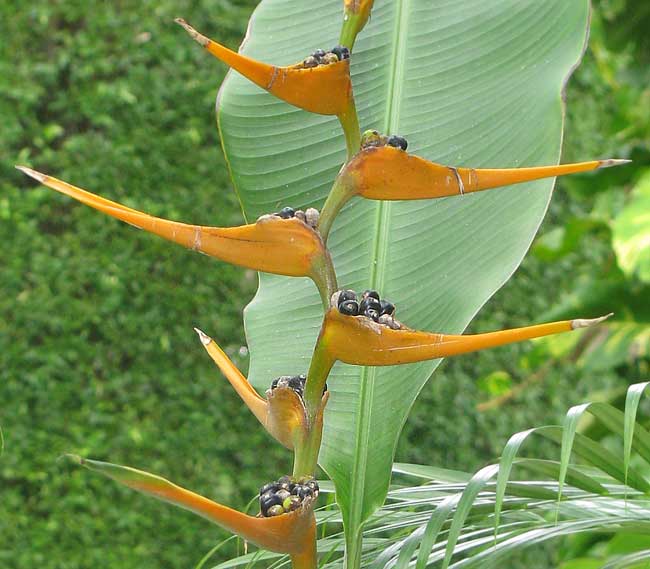
Heliconias, as you might guess from the broad leaf behind the flowering structure, is a member of the Banana Family. They're such gorgeous and unusual plants that many cultivars have been created and many hybrids made, so often it's hard or impossible to assign a species name to a plant. However, ours look very much like HELICONIA LATISPATHA which grows wild farther south and east of here where there's more rainfall, so that's what I'm guessing it is.
The orange structures aren't flowers, but rather boat- shaped modified leaves, or bracts, where earlier flowers arose " in the back of the boat" where the bracts attach to the zigzagging stem. Those black, shiny things are fruits, the flower period having long passed. A close-up showing the berry-like fruits is below:
